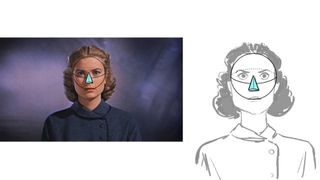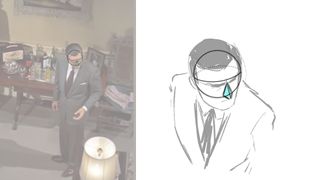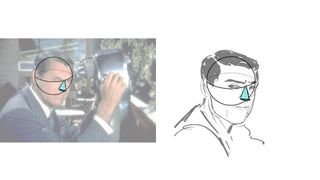How to draw a head: A complete guide
These insider tips will teach you the complex art of how to draw a head.

Learning how to draw a head is not a simple endeavour, but it's a crucial part of any artist's skillset so it's worth putting in the time to learn how to do it well. The head is a very complex structure, so there are a lot of tips and tricks to master that'll make it a simpler process. This guide will break it down for you.
On the first page, artist Alex Woo will teach you how to draw a head from different angles – and how to use shapes to draw the head realistically. The second page, from portrait artist Oliver Sin, is packed full of tips that will have you drawing a head like a pro.
If you'd like to conquer other parts of the body, see our post of the best how to draw tutorials. And if you need to update your kit, check out the best pencils you can buy at the moment. Or, keep reading on this page for Woo's pro tips.
How to draw a head: 8 common angles
The head is an incredibly complex structure. I’m not smart enough to process all that complexity at the same time, so I try to break it down into a couple simple shapes, which, for heads, is (1) a sphere for the cranium, and (2) a pyramid for the nose.
Using these two basic shapes, you can set up the foundation for a drawing of a head at any angle. You can learn all this and more from a number of brilliant lessons over on Schoolism.com.
The angles you’ll encounter the most as an artist are:
- Profile
- Straight on
- Up
- Up three-quarters
- Down
- Three-quarters
- Down three-quarters
- Rear three-quarters
You will find yourself returning to these angles over and over again, so it’s good to know them well enough that you can whip them out with your eyes closed. Any angle that’s not covered here can be interpolated with some in-betweening.
Get the Creative Bloq Newsletter
Daily design news, reviews, how-tos and more, as picked by the editors.
Commit these eight angles to memory, and start breaking down the head into simple shapes. That’s the best way to understand a complex object, issue, or problem: break it down into smaller digestible pieces. To draw something is to know it.
01. Profile

When drawing a head from profile, start by arranging your two basic shapes so that they roughly resemble the angle you’re looking for. Once you have a good approximation of the relationships between the shapes, you can start building the rest of your drawing from that foundation. As you will see from this example and those following, the sphere and pyramid arrangement can really help hold your drawings together.
02. Straight on

The straight-on is probably the angle we’re most familiar with, as it is the angle at which we see and interact with most people in real life. Still, breaking it down into the basic shapes of a sphere and pyramid will help you maintain the proper proportions and relationships throughout the face.
03. Up

This is a difficult angle to visualise because we rarely see people from this vantage point. In fact, this was the angle I had the most trouble with when I was a young artist. However, breaking the head down into these two simple shapes will make this angle less intimidating. If you find it difficult to rotate the shapes in your head, try gluing a ball and a four-sided die together, and see how the shapes change when you turn them.
04. Up three-quarters

This is a very common angle, as many heroic shots are framed from this vantage point. You’ll find it a lot in comic books, paintings, and print advertisements. Depending on what kind of stories you are telling, this might be an angle worth dedicating your time to in order to master early.
05. Down

This angle is not as common, but it can be very useful nonetheless in certain storytelling sequences. The key to draw a head from the down angle is orienting the head correctly by first establishing the correct position for the nose. This will give you a great “stake in the ground” from which to build the rest of your drawing.
06. Three-quarters

This is perhaps the most popular angle of all in film, portraiture, and illustration. It’s often the most flattering of the angles as it shows the most dimension in a person’s face. This, along with the up three-quarters (hero) angle, is worth learning first.
07. Down three-quarters

Like the down angle, this vantage is less often used, but still very handy to know. It’s an in-between of the profile and the down angles. Again, being able to accurately locate the nose from this complicated angle makes all the difference when you proceed to fill in the rest of the face.
08. Rear three-quarters

While the up angle was the hardest for me when I was younger, the rear three-quarters angle is the hardest for me now. Every time I try it, it never looks quite right. Thankfully, however, when this angle occurs, the person is usually not the focus of the image but is rather more of a compositional element. Nevertheless, it’s incredibly useful to be able to draw the head from this angle as many “over the shoulder shots” depict the head from this view.
Next page: 15 tips for drawing realistic heads

Thank you for reading 5 articles this month* Join now for unlimited access
Enjoy your first month for just £1 / $1 / €1
*Read 5 free articles per month without a subscription

Join now for unlimited access
Try first month for just £1 / $1 / €1
- 1
- 2
Current page: How to draw a head from different angles
Next Page 15 tips for drawing heads realistically